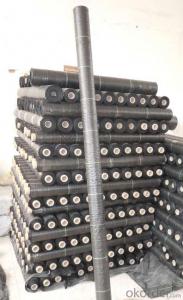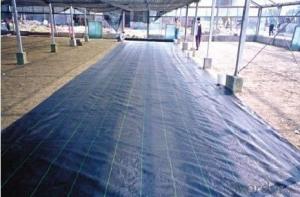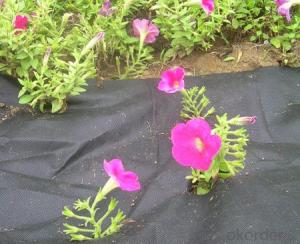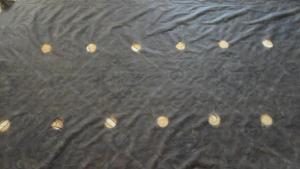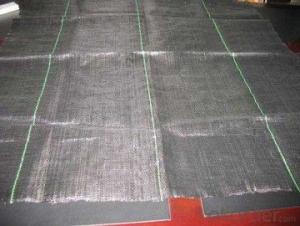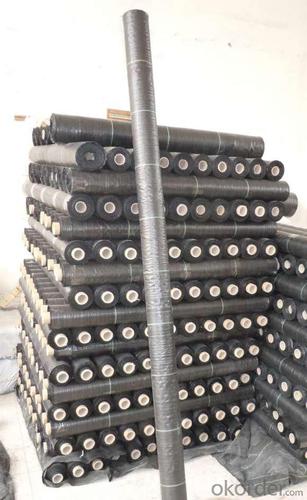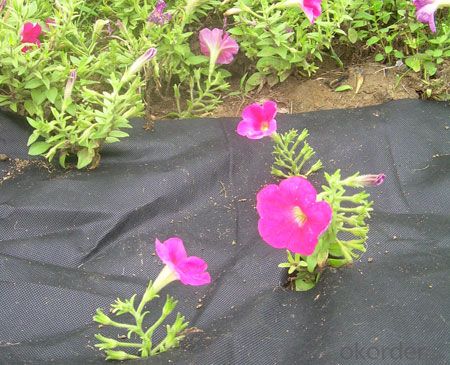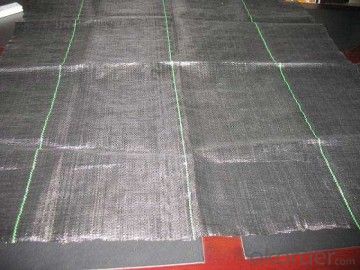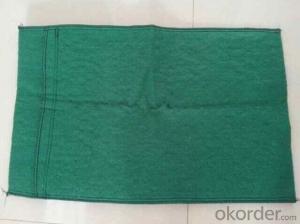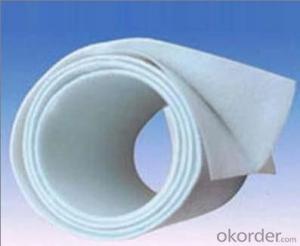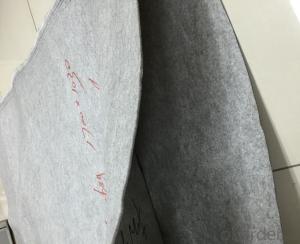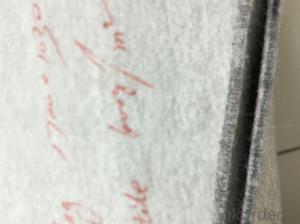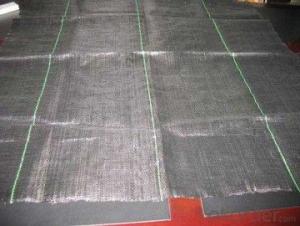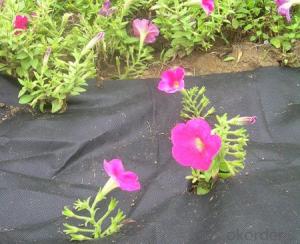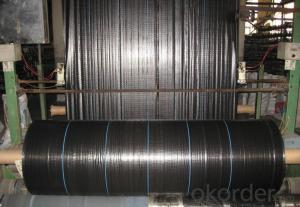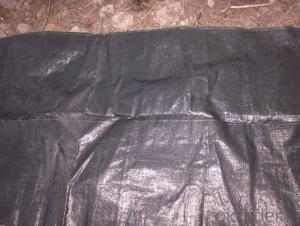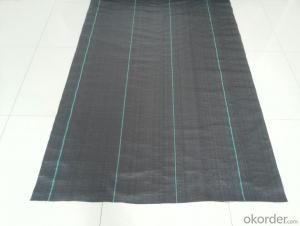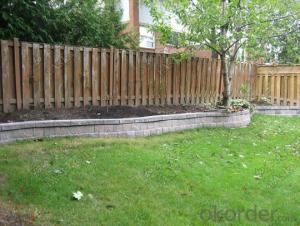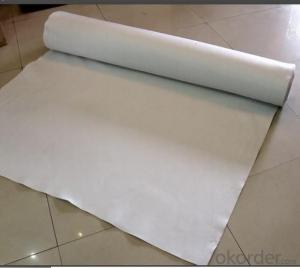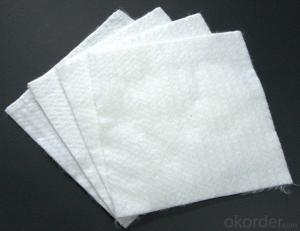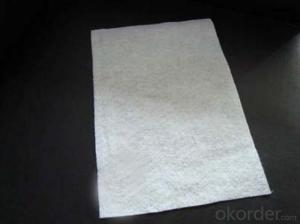UV Stabilized 100% PP Nonwoven Fabric for Agriculture Weed Control Mat, Anti Grass, Plant Cover/Fabric - Geotextile Pots
- Loading Port:
- Qingdao
- Payment Terms:
- TT OR LC
- Min Order Qty:
- 10000 m²
- Supply Capability:
- 500000 m²/month
OKorder Service Pledge
OKorder Financial Service
You Might Also Like
Product Description
1.Name | UV treated weed mat |
2.Weight | 60gsm-150gsm |
3.Width | 0.6m-5.3m |
4.Roll Length | 5m,10m,20m,25m,50m,100m,200m or as required |
5.Color | Black,Green,Black-green or as required |
6.Weave | 8*8,10*10,11*11,12*12,12*16 |
7.Material | 100% PP material |
8.U.V | With or without U.V |
9.Delivery time | Within 25-35 days after receive prepayment or L/C at sight |
10.Min order | 1x20ft container |
11.Terms of payment | 1.TT, 30% prepayment,balance should be paid against copy of BL. 2.LC at sight. |
12.Supply capacity | 120 tons per month |
13.Packing | In rolls with paper core inside and polybag outside or as your request. |
14.Quantity | 1x20ft container can load about 10 tons 1x40'HC can load about 22 tons. |
15.Export market | Australia,Canada,Argentina,The Middle East,Europe market ,Japan and so on. |
FUNCTION:
1. Cover crops in the ground surface,prevent weeds and against the insect
2. Controlling soil humidity and the temperature
3. Does not affect the growth of the crops
4. Protects plants from harmfully solar radiation
5. Air permeability, water permeability help crops growth.
6. Mothproof, eco-friendly, breathable, anti-bacteria, tear-resistant, fusible
APPLICATIONS:
1. Weed block for landscaped garden beds
2. Permeable liners for planters (stops soil erosion)
3. Weed control under wooden decking
4. Geotextile for separating aggregate / soils under walkway blocks or bricks
5. Assists in preventing paving from settling unevenly
6. Landscape fabric prevents soil erosion
Packaging & Delivery
| Packaging Details: | Packed In Roll Or In Bales Or Cartons Or According To Customers Requirement |
| Delivery Detail: | 20 Days After Order Confirmed |
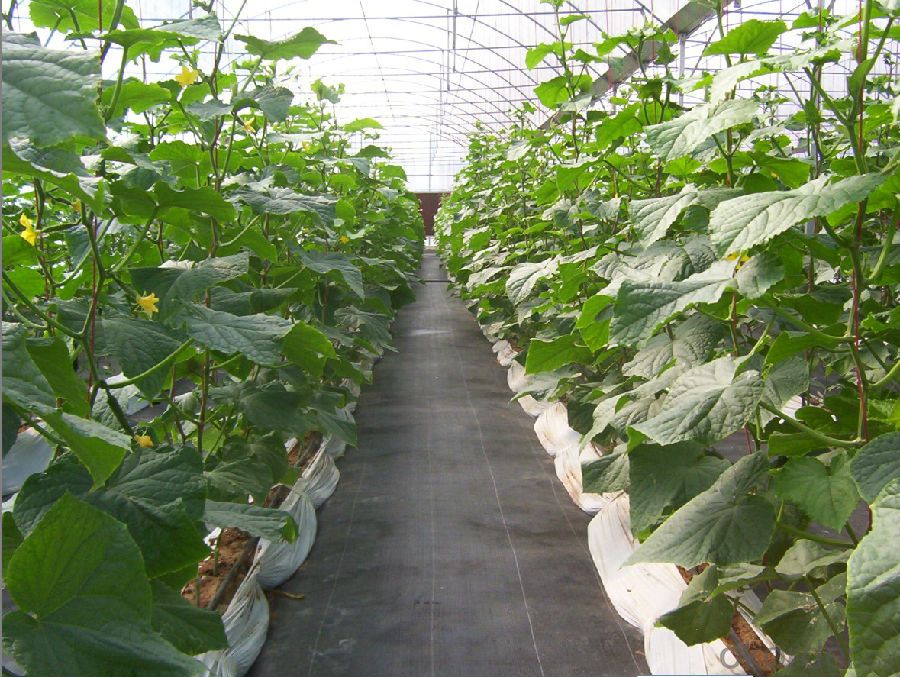
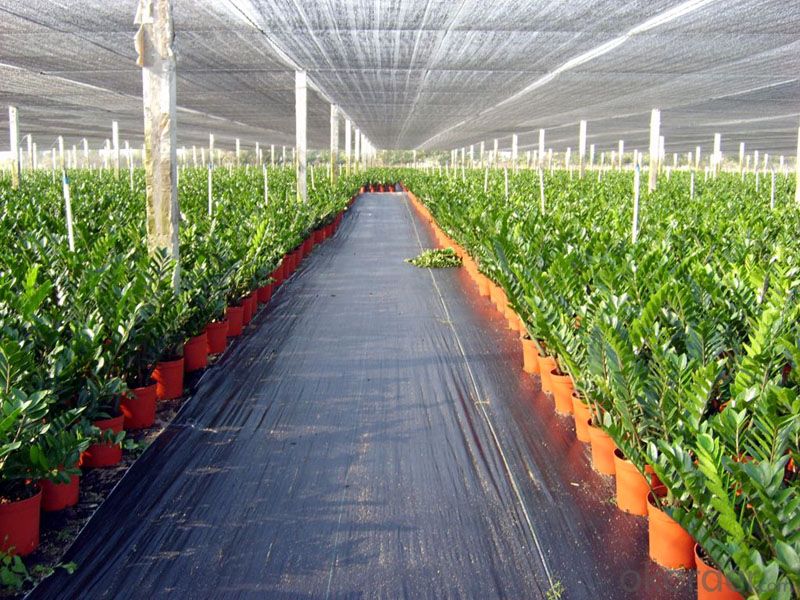
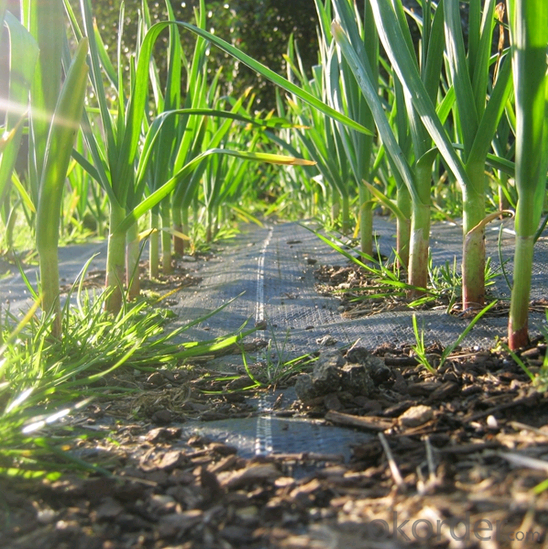
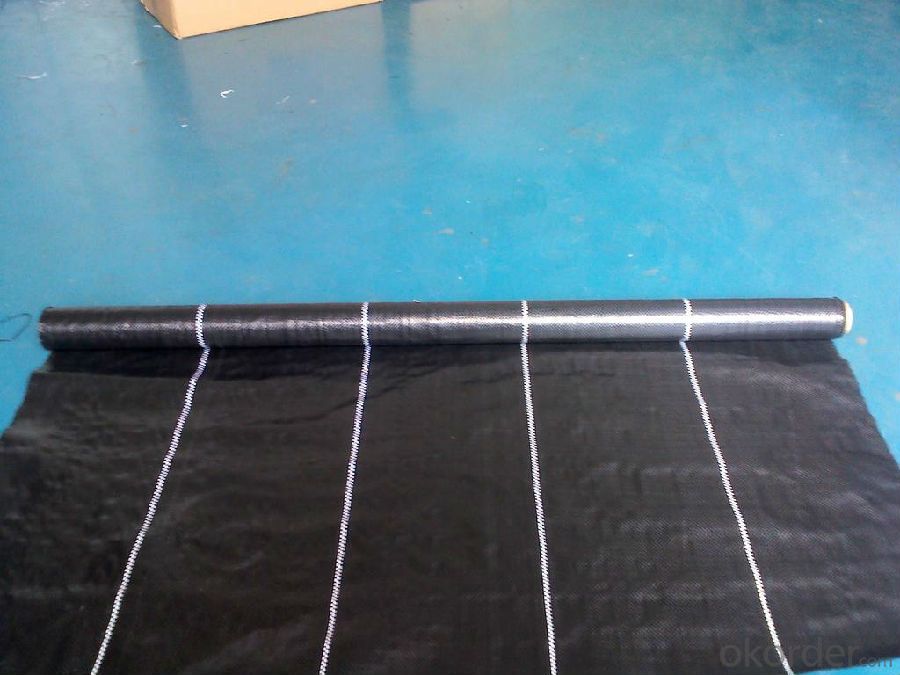
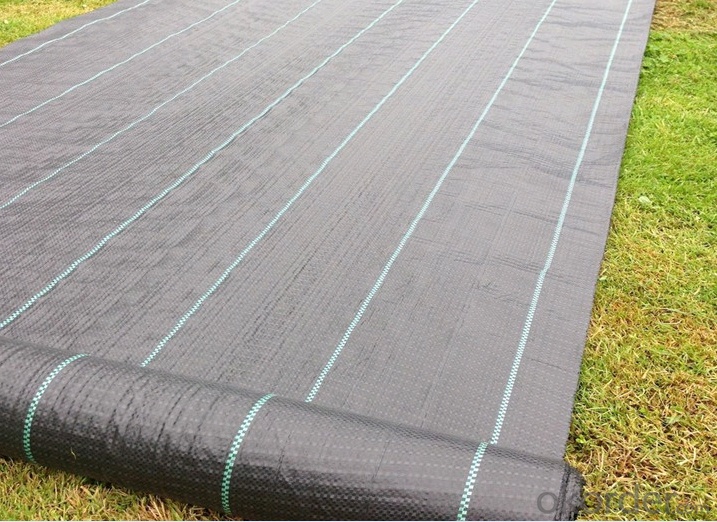
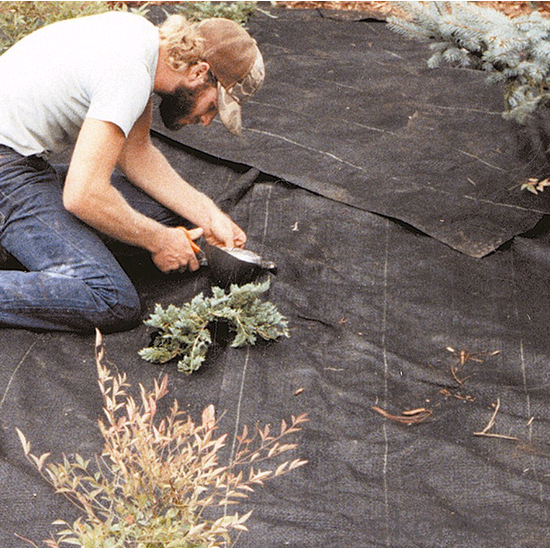
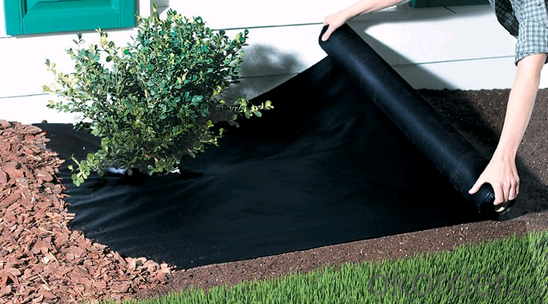
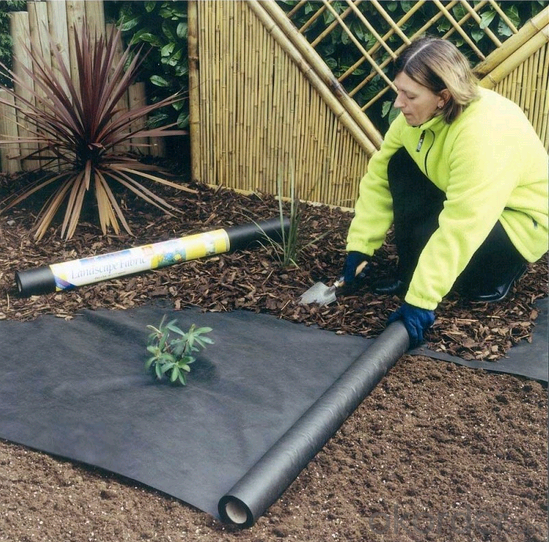
FAQ
1, Samples Policy
Samples are free, but the freight is on customers' charge
Samples will usually be sent out in one day.
2, Prices
As for the prices, we need you to provide us weight, color, width and usage so that
we can quote you best.
3, How to place an order?
Inquiry
Reply
Sample
Contract
Receiving deposit& production
Testing& Packing
Delivery
Receiving
- Q: Can geotextiles be used in wastewater treatment applications?
- Yes, geotextiles can be used in wastewater treatment applications. They are commonly used in various stages of the treatment process, such as filtration, separation, and erosion control. Geotextiles help to remove solids, retain suspended particles, and prevent clogging in wastewater treatment systems.
- Q: What are the specifications for geotextiles used in transportation projects?
- Geotextiles used in transportation projects typically have specific specifications in terms of their weight, thickness, tensile strength, permeability, and durability. These specifications ensure that the geotextiles can effectively separate, reinforce, or filter materials in the transportation infrastructure, such as roads, railways, or landfills. Additionally, they must meet certain industry standards and regulations to ensure their effectiveness and longevity in these projects.
- Q: What are the specifications of the garage roof using geotextiles?
- Generally with 200g or 300g, I professional production, wish smooth
- Q: Are geotextiles commonly used in canal bank protection?
- Yes, geotextiles are commonly used in canal bank protection.
- Q: How do geotextiles contribute to sediment control?
- Geotextiles contribute to sediment control by acting as a barrier that prevents the erosion and transport of sediment. They are placed in areas where sediment runoff is a concern, such as construction sites or areas prone to erosion. The geotextiles help to stabilize the soil and prevent sediment from being carried away by water or wind, thereby protecting nearby water bodies and ecosystems from sediment pollution.
- Q: Polyester filament geotextile performance characteristics
- Polyester filament geotextile Features: Polyester filament geotextile is made by polyester method by spinning acupuncture consolidation directly made, product specifications from 80-800g / m2 arbitrary choice, it is geotechnical engineering and civil engineering In the application of a geosynthetics, polyester filament into a network and consolidation method, the fiber arranged in three-dimensional structure. In addition to good mechanical properties, but also has a good vertical and horizontal drainage performance and good extension properties and high resistance to biological, acid and alkali, anti-aging and other chemical stability. At the same time, it also has a wide pore size range, tortuous pore distribution, excellent permeability and filtration performance. Polyester filament geotextile Uses: water conservancy project dam and slope protection of the filter, channel isolation, seepage; road, rail, airport runway foundation isolation, filter, drainage, slope, retaining wall and road reinforcement, Drainage; Port Engineering soft foundation treatment, beach embankment, harbor wharf and breakwater reinforcement, drainage; polyester filament geotextile has been widely used in the field of infrastructure construction, and gradually applied to a wider range of areas.
- Q: 3923.1 why not apply to geotextiles
- Geotextile price, geomembrane price, composite geomembrane price can be found tgcl1123 to see
- Q: Geotextile use
- Geotextile is a new type of building materials, raw materials are polyester, acrylic, nylon and other polymer polymer synthetic fiber. In accordance with the manufacturing method is divided into: there are two types of geotextile and non-woven geotextile. Geotextile with anti-seepage, anti-filtration, drainage, isolation, reinforcement, protection, sealing and other functions, it with the conventional masonry and concrete material seepage effect compared to a low investment, simple construction process, short duration Infiltration effect is good, the channel effective use of high coefficient. Water conservancy engineering dams and slope protection filter, channel isolation, seepage control; road, railway, airport runway foundation isolation, filter, drainage, slope, retaining wall and road reinforcement, drainage; , Geotextile has been widely used in the field of infrastructure construction, and has been gradually applied in the field of infrastructure construction, and the use of geotextile In a wider area.
- Q: How are geotextiles tested for strength and durability?
- Geotextiles are tested for strength and durability through various methods such as tensile testing, puncture resistance testing, tear resistance testing, and abrasion resistance testing. These tests involve subjecting the geotextiles to controlled forces, pressures, and wear to assess their ability to withstand different environmental conditions and loads.
- Q: What are the environmental considerations of geotextiles?
- Geotextiles have several environmental considerations, both positive and negative. On the positive side, geotextiles can help prevent soil erosion, reduce sedimentation in water bodies, and improve the stability of slopes and embankments, ultimately leading to the preservation of natural habitats. Additionally, geotextiles are often made from recycled materials, such as plastic bottles, which can help reduce waste and promote sustainability. However, there are also potential negative environmental impacts associated with geotextiles. The production and disposal of geotextiles can contribute to pollution, particularly if non-recycled materials are used. Additionally, if not properly installed or maintained, geotextiles can cause unintended consequences, such as altering natural drainage patterns or obstructing the movement of wildlife. Therefore, it is important to carefully assess the environmental implications of using geotextiles and ensure proper installation, maintenance, and disposal practices to mitigate any potential negative impacts.
Send your message to us
UV Stabilized 100% PP Nonwoven Fabric for Agriculture Weed Control Mat, Anti Grass, Plant Cover/Fabric - Geotextile Pots
- Loading Port:
- Qingdao
- Payment Terms:
- TT OR LC
- Min Order Qty:
- 10000 m²
- Supply Capability:
- 500000 m²/month
OKorder Service Pledge
OKorder Financial Service
Similar products
Hot products
Hot Searches
Related keywords
